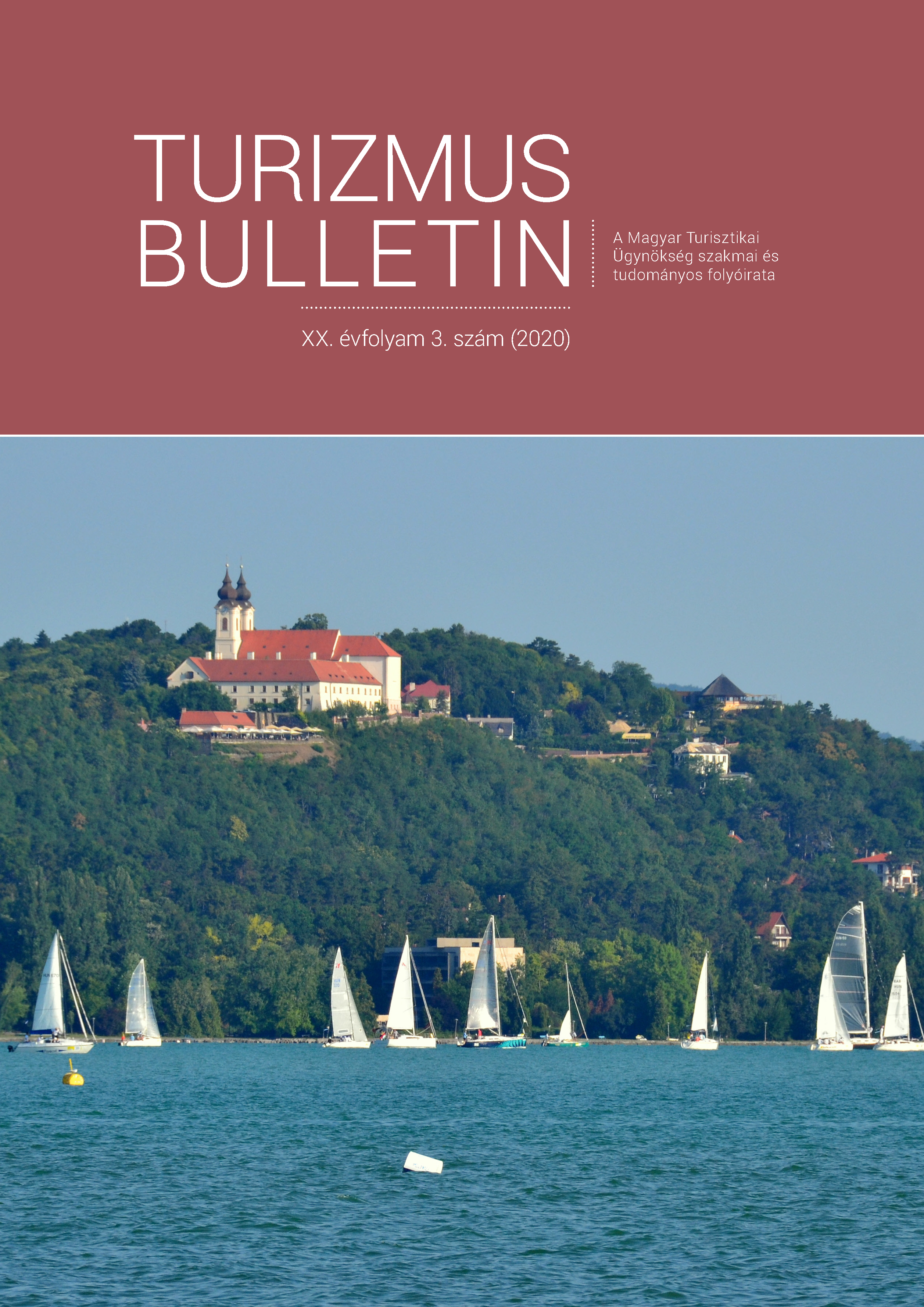Souvenirs created from bridges – an innovative product generated by a B-bridge concept
DOI:
https://doi.org/10.14267/TURBULL.2020v20n3.1Abstract
This s tudy e xamines t he r elationship b etween t ourism a nd a n o bject. I t d oes n ot f ocus o n the basic question of this relationship but shows how it is possible to create an innovative object by defining the common features of three disciplines, by merging their strengths, and, finally by forming a design concept.
The aim is to create an object, which helps tourists who visit Budapest to enhance their experience in both an active and an inactive way. It should contribute to the active and passive periods of their stay whilst, after their return home it acts as a souvenir to store and later to recall the memories.
The study would not be complete without describing the economic advantages of the object, since today it is vital that a good idea should show some relevant financial benefit. Finally, the paper presents the challenges and opportunities of producing the product.
References
ASSMANN, J. (1999): A kulturális emlékezet, írás, emlékezés és politikai identitás a korai magaskultúrákban. Atlantisz Könyvkiadó, Budapest.
BACHELARD, G. (1977): Részlet az ember naplójából. In: Gyergyai A. (szerk.): Ima az Akropoliszon. A francia esszé klasszikusai. Európa Könyvkiadó, Budapest.
BAUER A. – KOLOS K. (2016): Márkamenedzsment. Akadémiai Kiadó, Budapest.
BRODIE, R. J. – HOLLEBEEK, L. D. – JURIC, B. – ILIC, A. (2011): Customer Engagement: Conceptual Domain, Fundamental Propositions, and Implications for Research. Journal of Service Research. 14(3). pp. 252–271. https://doi.org/10.1177/1094670511411703
CHANG, S. H. – WANG, K. Y. (2014): Investigating the antecedents and consequences of an overall store price image in retail settings. Journal of Marketing Theory and Practice. 22(3). pp. 299–314. https://doi.org/10.2753/MTP1069-6679220305
COSOVAN A. – HORVÁTH D. (2016): Emóció – Ráció: Tervezés – Vezetés: Designkommunikáció. Vezetéstudomány – Budapest Management Review.47(3). pp. 36–45.
COSOVAN A. – HORVÁTH D. – MITEV A. (2018): A designkommunikáció antropológiai megközelítése: a kreatív alkotói kapcsolatte-remtés rítusa. Replika. 106-107. pp. 233–245. DOI: 10.32564/106-107.14
GORDON, B. (1986): The souvenir: Message of the extraordinary. Journal of Popular Culture. 20(3). pp. 135–146. https://doi.org/10.1111/j.0022-3840.1986.2003_135.x
HERNÁDI M. (1982): Tárgyak a társadalomban. Bevezetés a tárgyak rendszerébe. Kozmosz Könyvek, Budapest.
KRAMER, B. (2017): There is No B2B or B2C: It’s Human to Human #H2H. Edited by Courtney Smith.
LITRELL, M. A. – BAIZERMAN, S. – KEAN, R. – GAHRING, S. – NIEMEYER, S. – REILLY, R. – STOUT, J. (1994): Souvenirs and tourism styles. Journal of Travel Research. 33(1). pp. 3 –11. https://doi.org/10.1177/004728759403300101
MICHALKÓ G. (2010): Boldogító utazás. A turizmus és az életminőség kapcsolatának magyarországi vonatkozásai. MTA Földrajztudományi Kutatóintézet, Budapest.
MITEV A. – KELEMEN-ERDŐS A. (2017): Romkocsma mint bricolage: Élményközpontú szolgáltatásérték-teremtés a romkocsmákban. Turizmus Bulletin. 17(1-2). pp. 26–34.
NAMAZ L. – HORVÁTH D. – COSOVAN A. – TVERGYÁK K. K. (2018): Városmárka-hűség: melyek a Budapesti márkahűséget befolyásoló legfőbb tényezők? Turizmus Bulletin. 18(4). pp. 4–13.
RUPE, D. – KUNZ, G. (1998): Building a financially meaningful language of merchandise assortments. Clothing and Textiles Research Journal. 16(2). pp. 88–97. https://doi.org/10.1177/0887302X9801600204
SCHACTER, D. L. (1998): Emlékeink nyomában.Háttér Kiadó, Budapest.
SWANSON, K. K. – HORRIDGE, P. E. (2004): A structural model for souvenir consumption, travel activities, and tourist demographics. Journal of Travel Research. 42(4). pp. 372–380. https://doi.org/10.1177/0047287504263031
SZÁRAZ I. – VÍGH V. (2014): Kulturális városimázs-építés. In: Jászberényi M. (szerk.): A kulturális turizmus sokszínűsége. Akadémiai Kiadó, Budapest.
WONG, I. A. – WAN, Y. K. P. (2013): A systematic approach to scale development in tourist shopping satisfaction linking destination attributes and shopping experience. Journal of Travel Research. 52(1). pp. 29–41. https://doi.org/10.1177/0047287512457263
XU, Y. – McGEHEE, N. G. (2012): Shopping behavior of Chinese tourists visiting the United States: Letting the shoppers do the talking. Tourism Management. 33(2). pp. 427–430. http://dx.doi.org/10.1016%2Fj.tourman.2011.05.003
Internetes források
COSOVAN A. (2009): DISCO. Co&Co Communication. http://issuu.com/cosovan/docs/ca_disco_web, Letöltve: 2019. május 5.
COSOVAN A . (2012): Designkommunikáció.Mindenki Akadémiája. Magyar Televízió M5. https://youtu.be/BC6-s0bik54, Letöltve: 2019. május 5.
KSH (Központi Statisztikai Hivatal) (2019): Turizmus, vendéglátás. Területi Statisztika. www.ksh.hu, Letöltve: 2019. május 1.
UNWTO (United Nations World Tourism Organization) (2019): World Tourism Barometer and Statistical Annex. http://marketintelligence.unwto.org/barometer/january-2019-volume-17, Letöltve: 2019. május 1.

